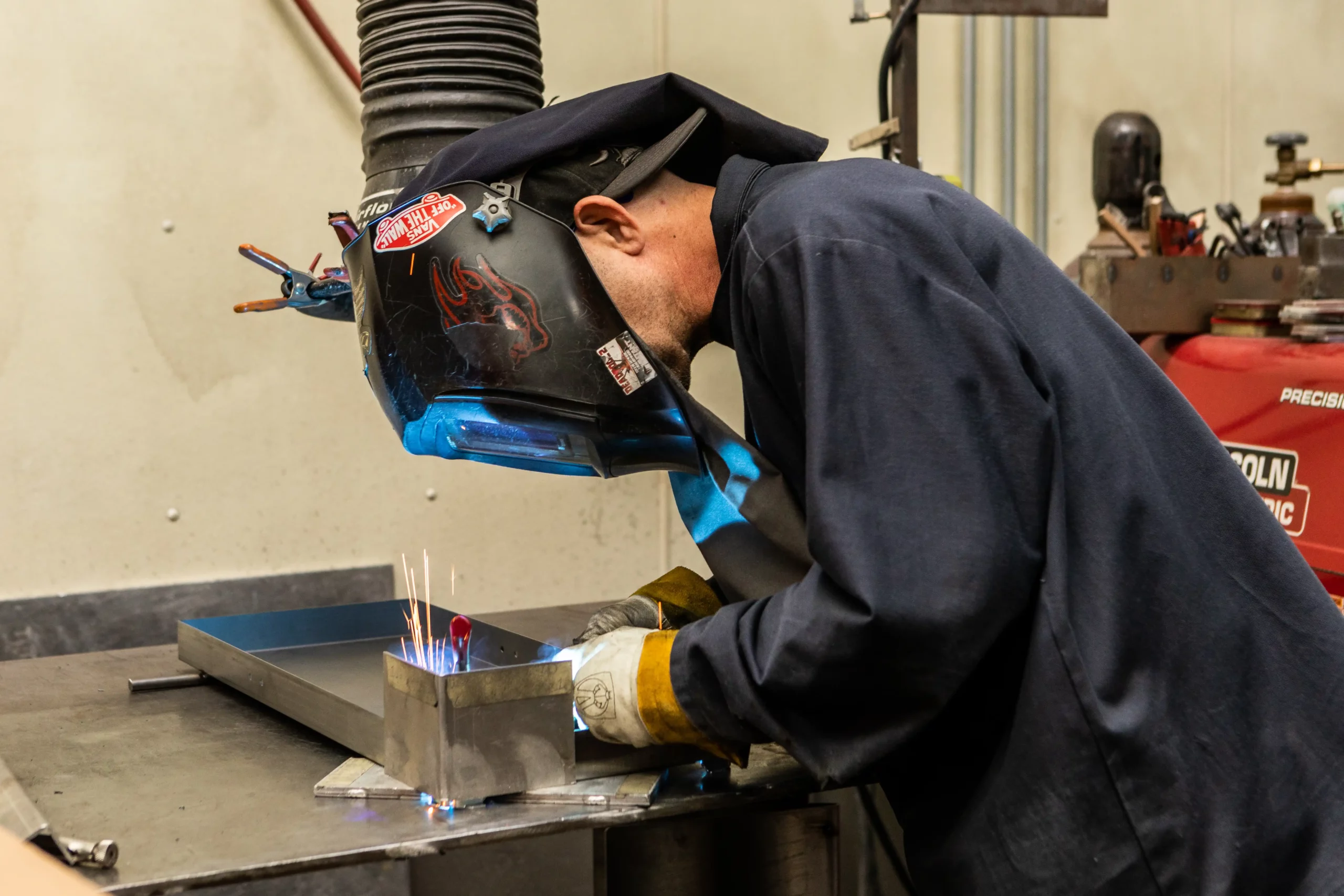Achieving Welding Excellence: Revealing the Tricks of WPS Application and Optimization
In the realm of welding, accomplishing excellence is a quest that hinges on the precise execution and optimization of Welding Procedure Specs (WPS) By delving into the key elements, approaches, challenges, and best methods associated with WPS, a globe of welding excellence waits for those who are willing to explore its midsts.
Relevance of WPS in Welding
The Value of Welding Procedure Requirements (WPS) in the welding industry can not be overstated, serving as the backbone for making sure uniformity, quality, and security in welding operations. A WPS provides in-depth guidelines on how welding is to be accomplished, including crucial variables such as products, welding procedures, joint design, filler metals, preheat and interpass temperature levels, welding currents, voltages, travel speeds, and much more. By sticking to a well-defined WPS, welders can keep harmony in their work, causing constant weld top quality throughout different projects.

Crucial Element of WPS
Discussing the integral components of a welding procedure specification (WPS) is important for recognizing its role in welding operations. A thorough WPS includes numerous crucial elements that assist welders in achieving high quality and uniformity in their job. One crucial element of a WPS is the welding process requirements, which outlines the certain welding procedures to be made use of, such as gas tungsten arc welding (GTAW) or secured metal arc welding (SMAW) Additionally, the WPS consists of details on the welding products, such as the type and specs of the base steel and filler metal to be made use of. The WPS also defines important variables like welding criteria, interpass and preheat temperature demands, and post-weld heat therapy procedures. Additionally, it consists of information on joint layout, fit-up, and any kind of special methods or safety measures necessary for the welding operation. By incorporating these crucial elements into the WPS, welding treatments can be standardized, ensuring high quality, performance, and safety in welding procedures.
Strategies for WPS Optimization

Second of all, training and certification of welding personnel according to the particular requirements of the WPS is extremely important. Supplying thorough training programs and making certain that welders are accredited to execute treatments detailed in the WPS can bring about greater high quality welds and reduced rework.
Furthermore, leveraging modern technology such as welding software application and surveillance systems can aid in optimizing WPS. These devices can help in tracking variables, making sure criteria are within specified restrictions, and supplying real-time comments to welders, enabling them to make immediate modifications for boosted weld high quality.
Typical Obstacles and Solutions
Encountering barriers in implementing the techniques for WPS optimization can hinder welding operations' efficiency and high quality. One common challenge is poor training or understanding of the welding procedure specs (WPS) among the welding group.
Another difficulty is the absence of proper documents and record-keeping, which is essential for WPS optimization. Without clear documents of welding criteria, materials used, and inspection results, it becomes tough to recognize locations for improvement and ensure consistency in welding procedures. Carrying out a robust documents system, such as electronic welding management software program, can help simplify record-keeping and assist in data evaluation for continual renovation.
Additionally, irregular welding tools calibration and maintenance can present a considerable difficulty to WPS optimization. Normal tools checks, calibration, and upkeep routines should be complied with strictly to make certain that welding parameters are accurately controlled and preserved within the specified resistances (welding WPS). visit this site By resolving these usual challenges with aggressive options, welding procedures can boost effectiveness, quality, and general welding excellence
Finest Practices for WPS Implementation
To make sure effective WPS execution in welding procedures, adherence to industry requirements and precise focus to detail are extremely important. When starting WPS execution, it is important to begin by completely recognizing the specific welding needs of the project. This involves a thorough evaluation of the welding treatment requirements, materials to be welded, and the ecological problems in which the welding will take place.
Once the demands are clear, the following step is to choose the appropriate welding procedure that aligns with these specs. This involves getting in touch with the relevant codes and criteria, such as those offered by the American Welding Culture (AWS) or the International Company for Standardization (ISO), to ensure compliance and quality.
Moreover, documenting the entire WPS implementation process is essential for traceability and quality assurance. In-depth documents need to be maintained concerning welding specifications, material preparation, preheat and interpass temperatures, welding consumables used, and any discrepancies from the original procedure. Regular audits and reviews of the WPS can aid recognize locations for improvement and ensure ongoing optimization of the welding procedure.


Verdict
Finally, the execution and optimization of Welding Treatment Specifications (WPS) is vital for attaining welding excellence. By comprehending the crucial elements of WPS, carrying out reliable approaches for optimization, addressing common obstacles, and following finest methods, welders can make certain premium welds and safe working problems. It is important for specialists in the welding industry to prioritize the appropriate application of WPS to boost overall welding efficiency and attain wanted end results.
The Relevance of Welding Procedure Specs (WPS) in the welding sector can not be overemphasized, serving as the backbone for making sure uniformity, high quality, and safety and website link security in welding procedures. A WPS gives comprehensive directions on exactly how welding is to be carried out, consisting of essential variables such as products, welding processes, joint design, filler metals, preheat and interpass temperatures, welding currents, voltages, traveling rates, and much more. One vital element of a WPS is published here the welding process specification, which describes the specific welding processes to be utilized, such as gas tungsten arc welding (GTAW) or protected metal arc welding (SMAW) By incorporating these vital aspects into the WPS, welding procedures can be standard, ensuring top quality, efficiency, and safety in welding procedures.
It is essential for professionals in the welding market to prioritize the proper execution of WPS to boost total welding performance and achieve desired end results.